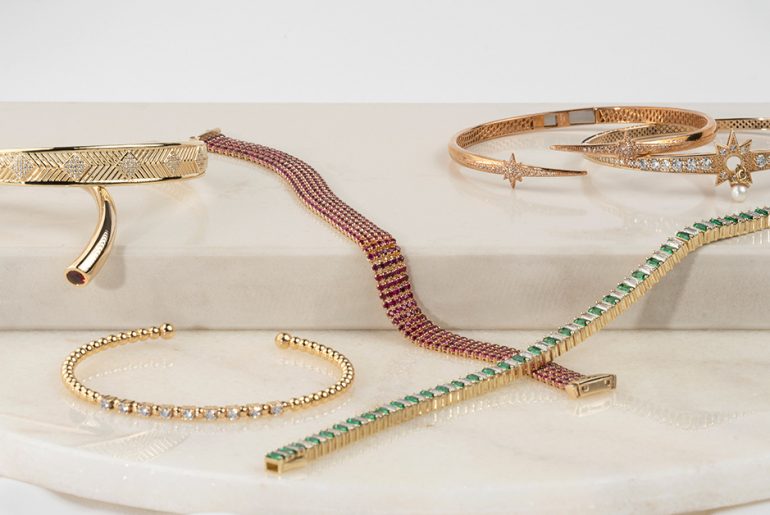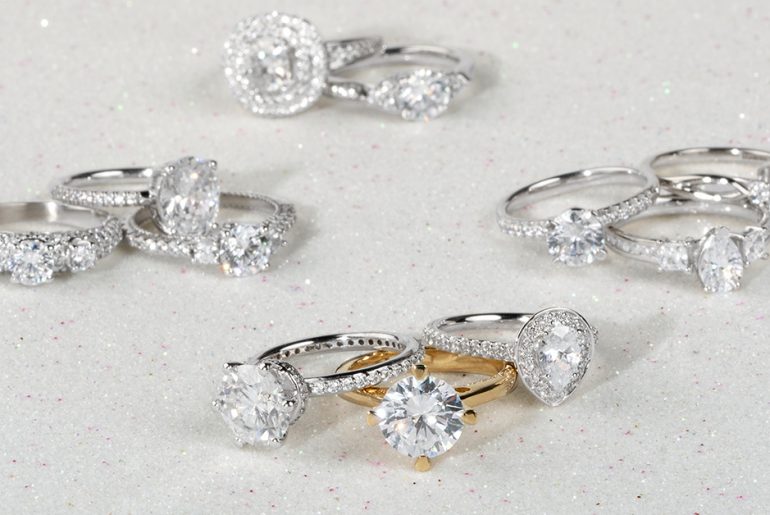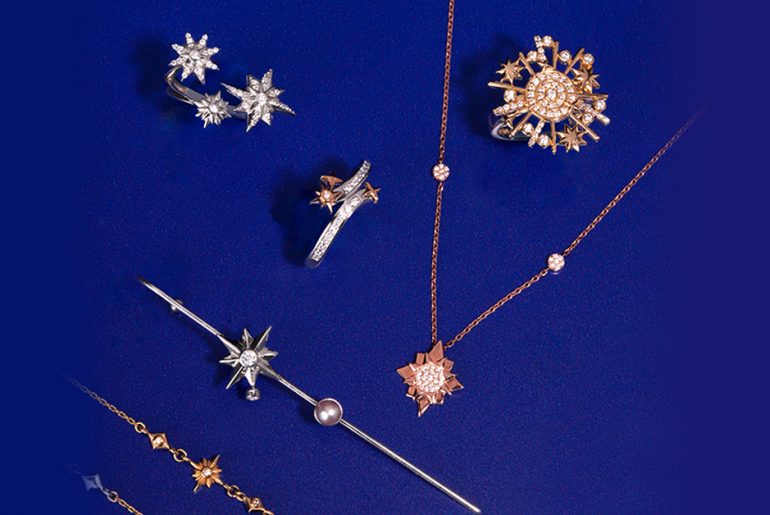FEATURES
Diamond – today mainly found in South Africa, India, Brazil, Canada and Australia – was found for the first time three billion years ago and is the only gemstone that is found in the nature with just one chemical element – carbon. Furthermore it is the hardest natural mineral with the highest score 10 on the Mohs scale of mineral hardness. Most probably this is the reason for its origin from the Greek word “adámas”, which originally means unbreakable or unalterable.
The diamond is the birthstone of the month April and the official 60th year wedding anniversary gemstone. This precious stone is described as the symbol for power, strength, durability, innocence and luck. In addition to this it has a high brilliance, which means that it owns a great ability for light reflection. Light beams stay reflected in the stone and as a result of this the diamond receives an excellent glance.
CHARACTERISTIC PROPERTIES
- stunning brilliance
- perfect stone clarity and
- completely colorless structure
FLAWLESS DIAMONDS
There are four criterias considered to find out the most perfect diamond – “4C’s of Diamonds”:
- Color: Most of the diamonds have hues of yellow, brown or grey. It is difficult to find white or opaque colors. The less colored a diamond is, the more special and precious it is.
- Clarity: A diamond is seen as completely flawless when it has no inclusions. Of course this is very rare, because these gemstones are hardly found without any inner features or impurities. To control this condition it is reverted to a 10X enlargement under the microscope.
- Carat: Carat is the weight indication of gemstones and diamonds. A carat is one fifth of one gram (0,2g) and a diamond with one carat weighs according to this 100 points.
- Cut: The cut is the single feature that is not determined by the nature, but by human. Thereby the symmetry of the stone is the most important part. Sloppy work leads to a low light reflection and to a little sparkle as a consequence of this.
ATTENTION!: SYNTHETIC DIAMONDS
In the last few years there is an increasing trend of producing diamonds synthetical in laboratories. Thereby exactly same conditions as the natural ones are needed for the production of diamonds. During this process graphite is pressed to a diamond through cristallisation and the result is a man-made diamond which looks very similar to the natural one. The similarity is so great, that it is not possible to see the difference between the synthetic and natural diamond with naked eye.
GLAMIRA advice: Buy your diamond jewelry only from well-known, familiar brands of which you are sure that their diamonds are natural ones; not ones produced in laboratories.




